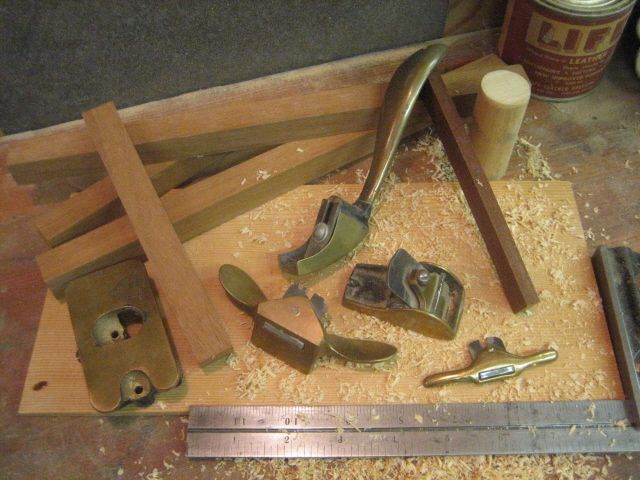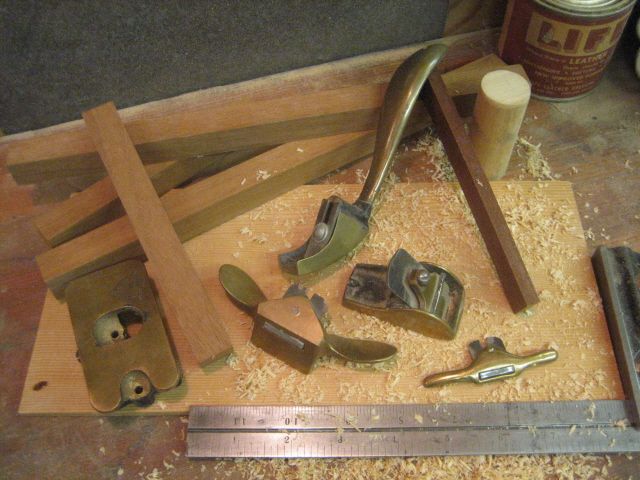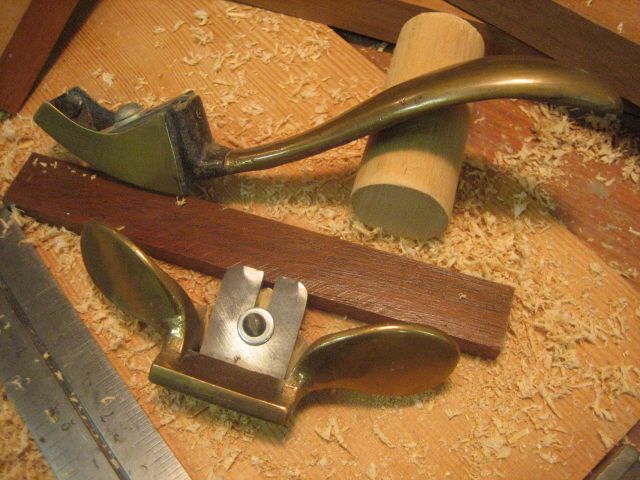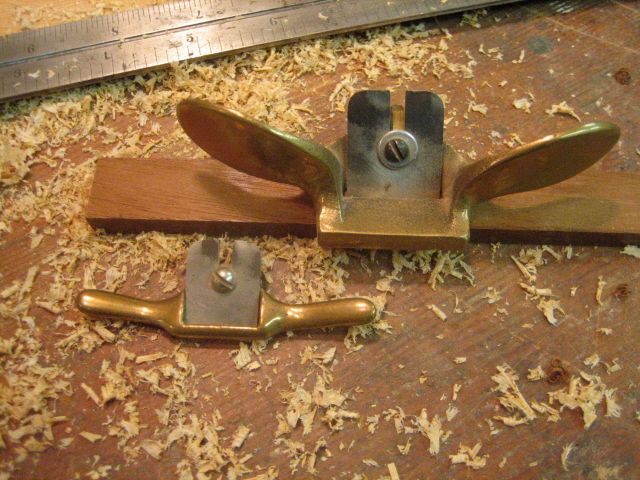
These spokes and planes were made by my dad as part of his apprenticeship training at the Mare Island Navel Shipyard Pattern Shop in Vallejo, Ca. The Pattern Shop was part of the shipyard’s foundry operations. Any part of a ship made of cast brass, iron or steel was painstakingly carved in wood (mostly spruce, mahogany and pine) then used to make a mold for casting the part using the lost wax method. Dad entered the Apprenticeship program in 1941 just before the country entered the war. Apprentices applied and were selected after demonstrating basic hand tool use, passing a written test, and verification that the applicant was of good moral character. Those selected entered a beehive of intense activity. Their days were full of classroom training, shop assignments, tool sharpening, and, after a ten hour shift, they cleaned the shop to the satisfaction of a crusty elder journeyman. Then home to return again to the same routine six days a week. Washout was rapid and those in each class who had the skill, talent and drive for this demanding work were quickly spotted and welcomed into the fraternity of Patternmakers. After formal acceptance into the shipyard’s guild, each apprentice was given a complete set of hand tools, including planes, chisels, saws, lathe steels, and so on. But none of the tools were fitted with handles or came in appropriate storage. Each apprentice was expected to design and construct tool storage and handles for the entire set. with one exception, the planes. They were, and still are, fitted with factory wood handles. (thanks, Stanley/Bailey) Patternmaking, like any specialty woodcraft, requires its own unique tools. Each apprentice made their special-use tools; they carved the patterns, made the molds, deburred and finished the casting, fabricated all parts and assembled the final product. After making them, Dad used these little jewels on the fine parts of a pattern where curves and short flat shapes had to be precisely rendered.
Dad was considered an “essential war worker” and thus deferred from the draft. But, like many of his generation, he was driven to serve. The Army Corps of Engineers was looking for candidates to serve on a seagoing dredge that was going to be used to dredge the silted harbors of Europe in support of the allied invasion. Mare Island reluctantly gave him a leave of absence and he was inducted into the Army. Serving as the ship’s carpenter, he took his measuring tools, chisels and mallets, the Stanleys and this set of planes and spokes with him. The tool chest and the rest of his tools were stored with his parents. After a perilous convoy across the North Atlantic, his ship was assigned dredging operations on the Mersey to Liverpool, the Thames to London, the ports of Cardiff, Portsmouth and Southampton. After D-day his ship dredged, with little success, the Mulberries set off the Normandy beaches, then the port of Cherbourg and the River Shelt to Antwerp. While dredging near Antwerp, the concussion from an exploding V-2 rocket sheared the impeller shaft putting the dredge out of service. Dad returned home, unharmed, married his love, and had three children. He didn’t go back to patternmaking after the war. Instead he went to college on the GI Bill, became an industrial arts teacher and used these tools on countless projects. I grew up in the presence of this remarkable man and these tools. I absorbed to my core, his respect for tools, his love of the craft, and most importantly his talent and his skill. He’s gone now and I am the steward of his Mare Island tools. As far as I’m concerned, they are all “jewels.” Thanks Dad.




























View Comments
I was moved to read your article. I am sure that each time you use these tools you remember your Father.
The Japanese believe that inanimate objects can carry and be imbibed with the soul of the user, so some part of your father lives on in these tools.
Derek.